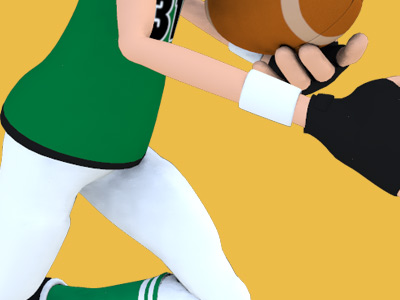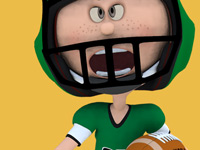American football

Icing the kicker (American Football Strategy)
In the sports of American football or Canadian football, the act of icing the kicker or freezing the kicker is a tactic employed by defending teams to disrupt the process of kicking a field goal just prior to the snap. Typically, either a player or a coach on the defending team will call time out just as the kicker is about to attempt a game-tying or game-winning field goal. This is intended to either stop the kick immediately as the kicker is mentally prepared, or allow for the kicker to kick immediately after the timeout so that the initial kick does not count, in an attempt to mentally disrupt the kicker for the actual kick.
This tactic is also common in basketball, known as icing the shooter. A team may call a time out just before the opposing team's free-throw shooter is given the ball on the final free throw, in an attempt to disrupt the shooter, typically if a missed free throw allows for the calling team to either have a chance to win the game with a successful field goal, or allows the calling team to preserve a lead.
One variant of this tactic, attributed to former Denver Broncos coach Mike Shanahan, is to call time out from the sidelines just before the ball is snapped. This prevents the kicking team from realizing the kick will not count until after the play is over. However, this has the potential to backfire: the invalid first kick could miss or be blocked, only to be followed by a successful second kick.
Effectiveness
In their book Scorecasting, Tobias J. Moskowitz and L. Jon Wertheim analyzed “pressure” kicks from 2001 through 2009 while controlling for the distance of the field-goal attempt. They found that icing the kicker certainly does not produce the desired effect, and in some cases might even backfire. Moskowitz found that when an opposing coach iced the kicker with 15 seconds or fewer left to go in the game, those kickers tended to be more accurate.
A study was also undertaken by Scott Berry, a statistician and the former chairman of the Statistics in Sports section of the American Statistical Association, and Craig Wood, a biostatistician, life-long Pittsburgh Steeler fan, who won the Inaugural Henry Hood Center for Health Research Pillar Award, was published in 2004 in the journal Chance. Berry and Wood looked at every field-goal attempt made in the 2002 and 2003 NFL seasons, including playoffs, and concluded that, for "pressure kicks" – those made with 3 minutes or less remaining in the game or overtime period which would tie the game or put the kicking team in the lead – in the 40-55 yard range, icing the kicker caused the percentage of successful attempts to drop by about ten percent for an average kicker on a sunny day. On shorter kicks, the effect was found to be negligible. However, the statistical significance of the difference found – which amounted to four kicks out of 39 attempts – has been questioned, and an examination by Nick Stamms of STATS, Inc. found that "pressure kicks" (defined as above except within two minutes, not three) in the NFL regular season from 1991 to 2005 showed an insignificant difference between non-iced kicks (457 out of 637, or 71.7%) and iced kicks (152 out of 211 or 72%).
SPORTS



American Football
Game play in American football consists of a series of downs, individual plays of short duration, outside of which the ball is dead or not in play. These can be plays from scrimmage – passes, runs, punts, or field goal attempts (from either a place kick or a drop kick) – or free kicks such as kickoffs and fair catch kicks. Substitutions can be made between downs, which allows for a great deal of specialization as coaches choose the players best suited for each particular situation. During a play, each team should have no more than 11 players on the field, and each of them has specific tasks assigned for that specific play.
Rules and gameplay
- Scoring
- Maneuvers
- Strategy
- Play types
- Penalties
- Turnovers
- Downs
- Teams and positions
- Field
- Equipment
- Duration and time stoppages
- Advancing the ball and downs
- Kicking
- Officials and fouls
Positions
Offensive (Interior) line
Backs and receivers
Defensive line
Linebackers
Defensive backs
Special teams
- Kicker (K)
- Holder (H)
- Long snapper (LS)
- Punter (P)
- Kickoff specialist (KOS)
- Kick returner (KR) and Punt returner (PR)
- Upback
- Gunner
- Jammer


RESOURCES
This article uses material from the Wikipedia articles "American football", "American football rules", "Strategy", "Icing the kicker", which is released under the Creative Commons Attribution-Share-Alike License 3.0.
© Stories Preschool. All Rights Reserved.





